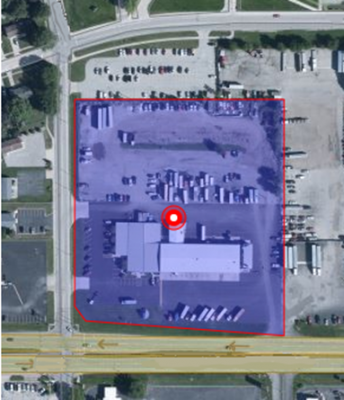Thought Leadership

By Chintan Sopariwala
Vice President, Aftersales Operation and Connected Vehicle
“Geofencing” is a term that’s increasingly familiar to many people in the business world. It’s the use of GPS or related technologies to set up an invisible fence or boundary. When a personal device or vehicle crosses the boundary, it sends a notification to a system or person monitoring that boundary. Marketers often use it to promote timely sales offers to consumers who have entered a specific store.
In trucking, geofencing offers a host of possibilities. It’s often integrated with fleet management software to help fleets keep track of their vehicles, monitoring a truck or trailer every step of the way to its destination. This can help carriers protect against losses, advise their customers about likely arrival times, or determine which arrival times are best to avoid traffic backups – among many other uses.
Navistar has geofenced more than 7,000 locations, including the dealerships of all commercial truck OEMs as well as other service providers.
“Pinging” for Repair Velocity
One way in which truck OEMs like Navistar can use geofencing to help fleet customers is by monitoring repair velocity – the length of time a vehicle is in the shop, which is an important measure of Uptime. Here’s how that’s done.
Think about an International® LT® Series vehicle entering a dealership – such as Silver State International in Sparks, Nevada, just to pick one example. Let’s say the truck’s telematics system pings us at 9:12 a.m., when it enters the dealership. It pings us again at 3:47 p.m., when the truck leaves the dealership. So we know the dwell time was less than 24 hours, which is the standard we are measuring by.
This helps the fleet customer in multiple ways. Number 1, it provides real-time visibility into the status of the vehicle. Number 2, it tells the fleet whether or not the driver has actually picked up the vehicle. Number 3, it tells the customer what portion of the repairs have been done in 24 hours.
Providing “Comparison Shopping”
Where this gets especially interesting is when geofencing helps customers compare different dealerships or even dealer networks. Here Navistar has a special intel advantage, because our remote diagnostics system, OnCommand Connection, is unique. It’s an open-architecture, all-brands system, so it can monitor multiple makes of vehicles, not just our own.
Today, more than 400,000 vehicles are on OnCommand Connection. Only a third of them are International vehicles. That means two-thirds are other makes – giving Navistar a unique advantage when measuring 24-hour turnaround time for all OEMs in North America. Basically, it can also tell us, or our customers, which dealers in the country are doing a better job than others.
So if I have a truck in northern Illinois, say, I have the option of taking my truck to multiple dealerships; and if I can factor repair velocity into the equation, I can determine which dealership gives me a better likelihood of getting the repair done fast. So geofencing helps you make a better-informed decision about where to take your truck for repair.
Geofencing can help OEMs as well as customers. From Q1 2018 through Q4 2019, Navistar has improved its 24-hour repair velocity by 76%, and has been consistently leading the industry in terms of Uptime. This is due to many factors, including close collaboration with our dealers on faster vehicle diagnosis, rapid distribution of repair parts, enhancements to our dealer inventory management system, and the expansion of our service network. Geofencing is giving us insights into how these improvements are paying off in actual customer Uptime.
More and more customers are also becoming increasingly interested in this data. A major fleet customer recently asked us to develop a custom dashboard where they can see their vehicles’ Uptime performance through geofencing. Additionally, customers are asking us to geofence their customers so they know precisely when the trucks arrive and leave the docks.
So geofencing is our fleet customers’ friend in many ways. It’s an exciting way for us to help them take advantage of data that helps their business succeed. We are just scratching the surface, and it’s going to deliver even more benefits in the future.